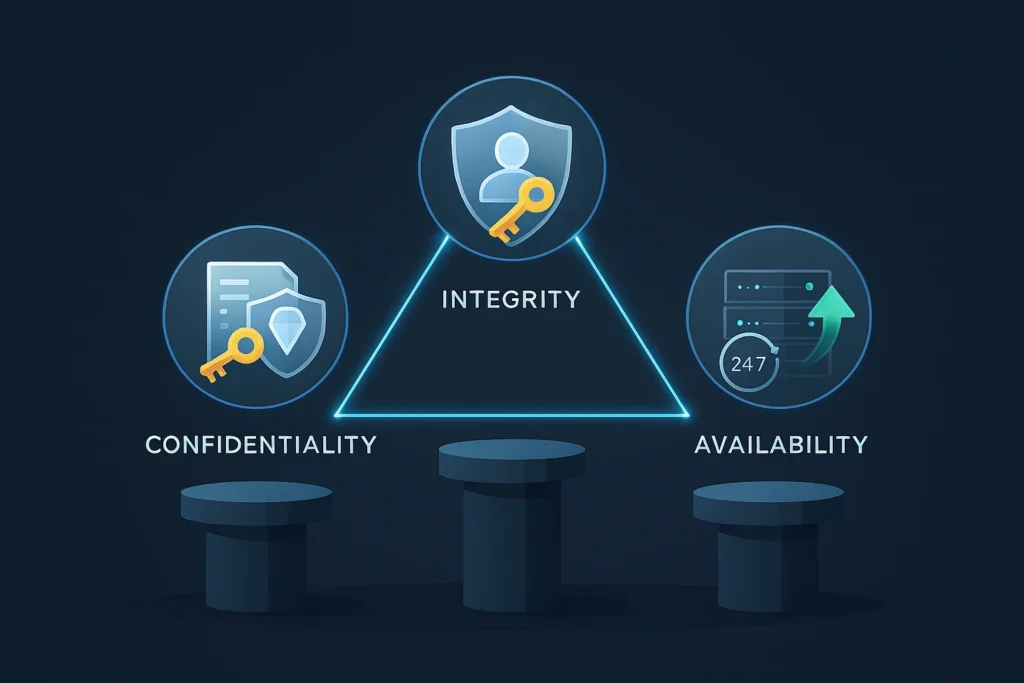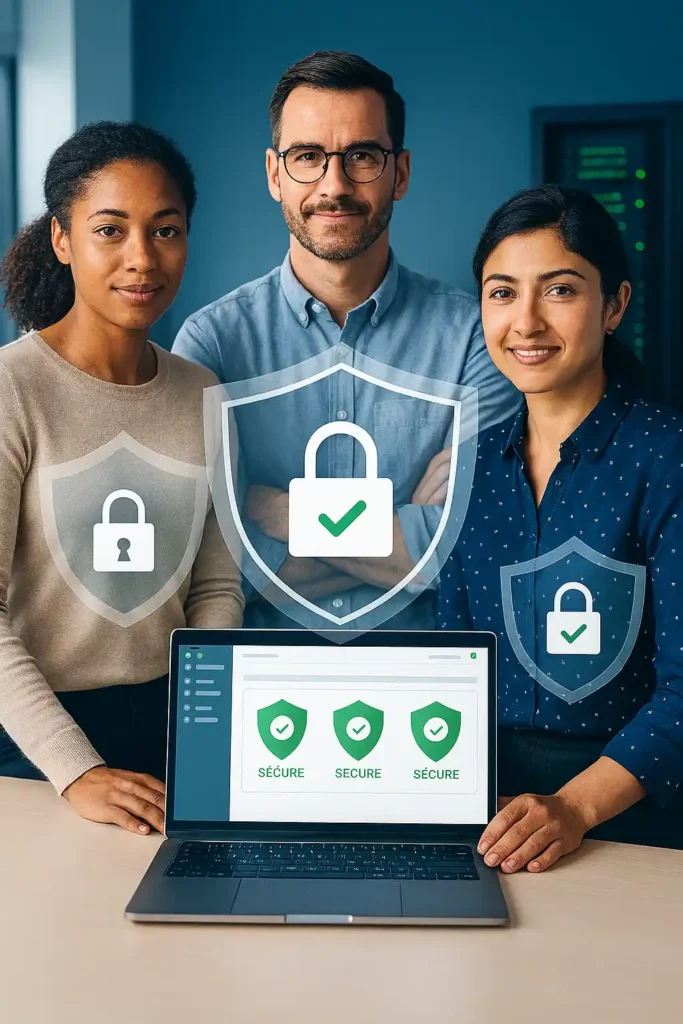The Ultimate Guide to Security Hygiene: The 10 Unsexy Habits That Prevent 90% of Breaches

In cybersecurity, we’re often fascinated by the latest AI-powered threat hunting platform or the zero-day exploit making headlines. But while everyone is looking for a silver bullet, attackers are quietly walking through the open doors we forgot to lock.
The most effective security strategy isn’t glamorous. It’s built on a foundation of consistent, disciplined habits—what we call security hygiene.
After decades on the front lines—James building secure infrastructure and David responding to the disasters that happen when it fails—we’ve seen the same simple failures cause overwhelming majority of breaches.
This guide cuts through the noise. We’re listing the 10 unsexy, non-negotiable habits that will do more for your security posture than any single product ever could. This is the bedrock.
The 10 Habits for Security Hygine: Your Foundation for a Secure Organization
1. Relentless Patch Management
The Habit: Systematically applying security updates for OS, software, firmware, and network devices within a defined, aggressive timeframe.
Why it Works: Attackers don’t need to be geniuses; they use automated tools to scan for systems missing patches for known vulnerabilities. Patching closes these doors. Automate where possible, and prioritize critical patches based on severity.
2. Strict Principle of Least Privilege (PoLP)
The Habit: Users and applications only get the minimum levels of access—and for the minimum time—necessary to perform their function.
Why it Works: If a user account is compromised, least privilege contains the blast radius. A compromised helpdesk account shouldn’t have domain admin rights. A marketing app shouldn’t have access to the financial database.
3. Comprehensive Backup & Recovery Drills
The Habit: Maintaining automated, frequent, and isolated backups of critical data—and, crucially, regularly testing the restoration process.
Why it Works: This is your “get out of jail free” card for ransomware and data corruption. Backups that aren’t tested are not backups. We’ve seen countless organizations have backups but still pay ransoms because they never practiced a full restore.
4. Enforce Multi-Factor Authentication (MFA) Everywhere
The Habit: Requiring a second form of verification beyond a password for all access, especially email, remote access, and cloud admin consoles.
Why it Works: It neuters the primary threat of stolen credentials. Even if a password is phished, the attacker lacks the second factor. This single habit blocks a massive percentage of attacks.
5. Network Segmentation
The Habit: Dividing a network into smaller, isolated zones to control and contain traffic between them.
Why it Works: It prevents lateral movement. If an attacker compromises a point-of-sale terminal in a retail store, they shouldn’t be able to jump directly to the corporate financial servers. Segmentation acts as a firebreak.
6. Robust Logging and Monitoring
The Habit: Ensuring critical systems generate logs and that something is actually watching them for anomalies.
Why it Works: You can’t respond to what you can’t see. Without logs, an incident is a mystery. Basic monitoring for signs of brute-force attacks, unusual login times, or unexpected data flows can provide early warning of a breach.
7. Standardized Hardening Configurations
The Habit: Using security baselines (like CIS Benchmarks) to remove unnecessary services, close unused ports, and configure systems securely from the start.
Why it Works: Default configurations are built for ease of use, not security. Hardening removes potential attack surfaces and reduces the “noise” in your environment, making real threats easier to spot.
8. A Clear Incident Response Plan
The Habit: Having a documented, practiced plan that everyone knows. Who do you call first? How do you communicate? What are the steps to contain the issue?
Why it Works: Panic is expensive. During a breach, minutes matter. A practiced plan eliminates confusion, speeds up response, and can save millions in downtime and recovery costs.
9. Effective Vendor Risk Management
The Habit: Vetting the security practices of your third-party vendors and partners who have access to your data or systems.
Why it Works: Your security is only as strong as your weakest link. Major breaches often start by compromising a less-secure supplier and then moving into the target organization.
10. Continuous Security Awareness Training
The Habit: Moving beyond annual checkbox training to engaging, continuous education that makes security part of the company culture.
Why it Works: It builds your human firewall. Technology can’t stop every phishing email. A trained user who knows how to spot a scam and report it is your most valuable asset.
The Unsexy Truth: Consistency in Security Hygiene Beats Complexity
You’ll notice a theme: none of these habits are new, and none are particularly exciting. Their power doesn’t come from innovation, but from ** relentless execution**.
You don’t need a massive budget to start. Pick one or two habits, master them, and then move to the next. A small organization that does these ten things well is infinitely more secure than a large enterprise that does them poorly.
The bottom line: Stop getting distracted by the hype. Master the fundamentals. In the world of cybersecurity, boring is beautiful. And it’s what keeps you safe.
FAQ Section
Q: What is the single most important habit to start with?
A: If we had to pick one, it’s Enabling Multi-Factor Authentication (MFA) on all critical accounts, especially email. It provides the biggest security bang for your buck with relatively low effort and cost. It directly mitigates the risk of credential theft, which is a root cause of countless breaches.
Q: How often should we really be patching?
A: It depends on the severity of the patch and the criticality of the system. For critical vulnerabilities (CVSS score of 9.0+), aim to patch within 72 hours. For high-severity vulnerabilities, within two weeks. For other systems, a regular, monthly patch cycle is a good baseline. Automate patching for standard software where possible to remove human error.
Q: Are offline backups really necessary?
A: Absolutely. This is non-negotiable for ransomware defense. Modern ransomware often seeks out and encrypts or deletes connected backups. Having an immutable or physically air-gapped backup (e.g., tapes disconnected from the network, or a cloud backup with object lock) is the only way to guarantee you can recover without paying the ransom.
Q: We’re a small business with no dedicated IT staff. How can we possibly do all this?
A: Start small and focus on the fundamentals. Use built-in tools: enable MFA on everything that offers it, turn on automatic updates for your computers and software, and use a reputable cloud-based backup service. Consider partnering with a Managed Security Service Provider (MSSP) who can manage these hygiene practices for you at a predictable cost. Doing something is always better than doing nothing.
No post found!


